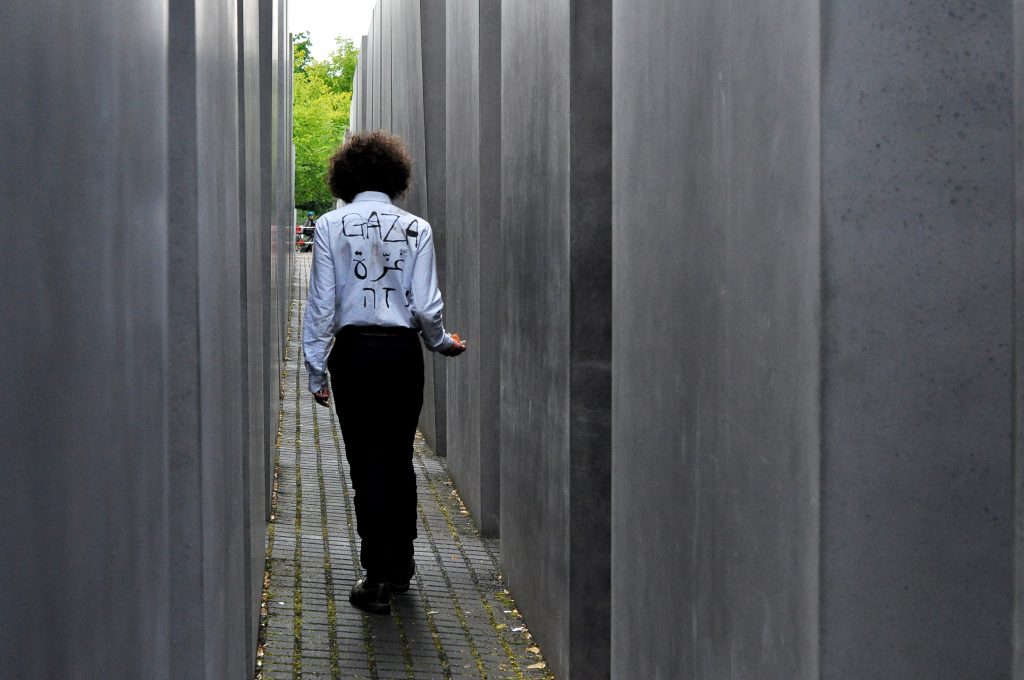On June 22, I walked sixteen kilometres across Berlin with a rusted car exhaust pipe tied to my abdomen, the word GAZA painted across my back in Roman, Arabic, and Hebrew letters, and thirteen stones I had collected in the streets of Warsaw piled on one hand. I walked from Grunewald Bahnhof, a deportation site during National Socialism, to Jüdische Friedhof Weißensee, the largest intact and active Jewish burial ground in Europe after the Nazi genocide. My intention was to realize a series of images I saw in my mind while I returned from Warsaw to Berlin and 62 Palestinian people, demonstrating their right of return as the US opened its relocated embassy in Jerusalem, were massacred in Gaza. I aimed to intervene, as an Ashkenazi man with a U.S. passport, in a racist transnational discourse that exploits my body and family history to ghettoize and disappear Palestinian life. This was the first enactment of a serial walk I later named “Counter-Ruin.”
“Counter-Ruin” is a culminating action of Lost in Jüdische Friedhof Weißensee, a durational site contemplation and collaboration with the Institute for Art in Context of the Berlin University of the Arts, supported by the DAAD.


